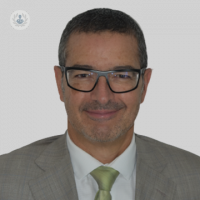Perfect brows every day: Eyebrow augmentation and restoration
Written in association with:Eyebrows are one of the most prominent features on our face, giving definition and character as well as helping to express our emotions. Missing or thin brows can make a person self-conscious, particularly given that fuller, bolder brows that have become fashionable once again. Although makeup products, such as eyebrow pencils can offer a temporary solution, eyebrow augmentation and restoration procedures can offer more permanent and natural results. In this informative article, leading hair restoration surgeon Dr Greg Williams gives expert insight on the advantages eyebrow hair transplant surgery can offer.

Why do people choose to undergo an eyebrow hair transplant?
Along with the chin, mouth, nose and eyes, eyebrows are a prominent facial feature with an important role in expression and conveying how we are feeling. Fluctuations in fashion also apply to eyebrow styling. From the 1920’s pencil-thin rounded arches, to thick and natural in the 1980’s, to barely-there brows in the 2000’s, eyebrow trends are regularly changing. In more recent years, bold, natural and thick eyebrows have once more made a comeback, leading to the popularisation of treatments such as micro-blading or brow lamination which aim to create more prominent eyebrows.
Although those with naturally bushy brows may relish the latest trend in eyebrow shape, those with thin eyebrows, either because they were born that way or because they were overplucked for a prolonged period, can be left feeling self-conscious. In addition, eyebrow volume tends to diminish simply due to the natural ageing process.
While makeup products, such as eyebrow pencils, gels and powders, can offer a temporary solution, an eyebrow transplant can offer a more permanent remedy to thin, sparse or missing eyebrows.
How is the procedure carried out?
Eyebrow hair transplants can improve the visual appearance of the eyebrow by restoring a non-existent brow or by shaping and filling out a thin eyebrow. To achieve a natural look, a thorough knowledge of anatomy and eyebrow design is required, as well as an advanced level of skill in hair extraction and implantation techniques.
To avoid results that look artificial, it is important to imitate the natural pattern of eyebrow hair growth direction, as eyebrow hair doesn’t all grow in the same direction and there can be a great deal of variation from person to person. Some eyebrow hairs face upwards and others downwards. In the centre of the brow, known as the body, there is a ‘herring bone’ growth pattern resulting in a thicker appearance compared to that in the head and tail of the brow. The surgeon’s creativity and artistic flare are essential in order to achieve natural results.
To ensure that the required or requested eyebrow shape is effectively recreated, the surgeon creates the incisions in specific directions and at specific angles, so that when the hairs are inserted the desired pattern of hair growth will occur. Precision in the procedure is what will ultimately give the eyebrows a natural appearance which will enhance an individual’s facial features in a positive way. Conversely, a poorly executed eyebrow transplant can be difficult to hide with the only recourse sometimes being to pluck out errant hairs or remove them permanently using a laser or electrolysis.
The hairs used in an eyebrow transplant are often extracted from a small area of the scalp at the sides or back of the head either by the Linear Strip Excision or Follicular Unit Excision donor harvesting methods. The number of hairs required per brow will vary from less than one hundred for those seeking subtle enhancement to four hundred or more in men seeking bushy brows. The procedure typically takes between three to four hours to complete.
What results can patients expect?
Although the transplanted hairs often do not grow for three to four months, by around nine months after the procedure, the new strands of hair should be fully settled and the result of the transplant can be judged. As hair taken from the scalp grows more quickly than native eyebrow hair, it is important to trim the transplanted hairs every five to seven days to give the best appearance.
If you are considering an eyebrow augmentation or restoration procedure and wish to discuss your options further, don’t hesitate to book a consultation with Dr Williams by visiting his Top Doctors profile.



